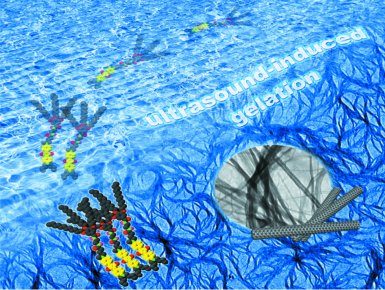Squaraines are an interesting class of polymethine-type dyes. Their combination of photostability and optical properties make them attractive for a variety of applications, for example, as ion sensors, in biomedical imaging, in light-energy harvesting, and organic photovoltaics.
A collaboration between the Italian-based group of Vakayil K. Praveen and Nicola Armaroli, Institute of Organic Synthesis and Photoreactivity, Bologna, and the Indian-based group of Ayyappanpillai Ajayaghosh, Photosciences and Photonics Group, Trivandrum, have found the use of ultrasonication methods can lead to the self-assembly and gelation of suitably designed squaraine dyes—a behavior so far unknown for this class of molecules.
The conditions for the supersaturation-mediated nucleation and growth of the squarine self-assembly are evidently modified by the use of ultrasound, as the control experiment showed no aggregation whatsoever when the squaraine derivative was heated and then slowly cooled without sonication. Morphological analysis showed that sonication promotes the formation of only one kind of nuclei, which in turn leads to extended crystalline fibrous structures. Also, the addition of a tiny amount of single-walled carbon nanotubes as a dopant leads to self-assembly at an even lower concentration. The presence of the nanoscale dopant yields a nanotape-like morphology, highlighting the importance of nucleation events in shaping the final self-assembled material.
- Ultrasound Stimulated Nucleation and Growth of Dye Assembly into Extended Gel Nanostructures,
J. M. Malicka, A. Sandeep, F. Monti, E. Bandini, M. Gazzano, C. Ranjith, V. K. Praveen, A. Ajayaghosh, N. Armaroli,
Chem. Eur. J. 2013.
DOI: 10.1002/chem.201301539




